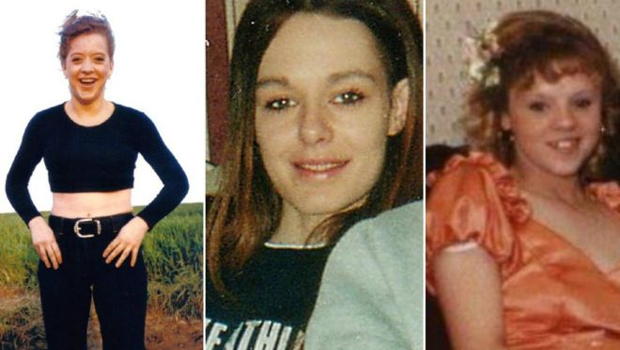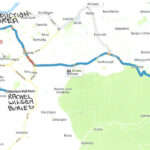Christopher Halliwell: The Secret Murders
5.5. The River Tees murders
by CHRIS CLARK & TIM HICKS
~~~~~
Introduction
In this article in the North Yorks Enquirer (NYE) Christopher Halliwell series, Tim and Chris examine the possibility that serial killer Christopher Halliwell was operating in Middlesbrough on the North Yorkshire Border and also cover some of the remaining Northern murders for which Halliwell may be responsible.
The NYE Christopher Halliwell Series:
- The breaking of Detective Superintendent Stephen Fulcher. By Tim Hicks
- Book review: “Catching a serial killer” by Stephen Fulcher. By Tim Hicks
- Christopher Halliwell and Peter Sutcliffe compared. By Chris Clark & Tim Hicks
- Christopher Halliwell how many victims? By Chris Clark & Tim Hicks
- Christopher Halliwell: The Secret Murders. By Chris Clark & Tim Hicks. Parts 1 – 9.
- Scotland
- Is Halliwell the “East Lancs Ripper”?
- The other Northern and Midlands cases.
- Have you seen this man?
- The River Tees murders.
- York: Did Halliwell murder Claudia Lawrence?
- Information Warfare and Serial Killer Investigations.
- The Swindon cases.
- Inside Out Justice. Who murdered Linda Razzell?
- Christopher Halliwell the documentary
To further their research, the authors have analysed Halliwell’s modus operandi, based on the circumstances of Halliwell’s two known murders (Miss Becky Godden-Edwards Case 24 and Miss Sian O’Callaghan Case 28). The results of their analysis is summarised below, in tabular format:
Table 2
The Darlington Case: Ann Heron (Case 5) 1990
Mrs Ann Heron’s body was found by her husband Peter in a pool of blood in the lounge of their luxury but isolated property, Aeolian House, on the outskirts of Darlington, Co Durham, on the 3rd of August 1990. She was aged forty four. She had been sunbathing in a place that was visible from the A67 and was found without her bikini bottoms. Her throat had been cut. There was no sign of forced entry.
Five witnesses reported seeing a ‘sun-tanned’ man in his early thirties leaving Aeolian House in a blue Ford Sierra or Austin Montego. He was driving so fast that he nearly crashed into another vehicle.
Another witness came forward and said that Mrs Heron was driving a vehicle with two passengers and was seen turning into Aeolian House.
Newcastle Chronicle article with more information here.
The Durham Constabulary investigations into Ann Heron’s murder 1990 – present.
In 45% of cases where a woman is murdered, the assailant is her husband, boyfriend or lover. This means that inevitably, the husband automatically becomes a suspect at the very start of the enquiry, no matter what the circumstances or the evidence then existing. This can lead to a presumption of guilt and a focus of the investigation on proving the guilt of the husband for the flimsiest of motives.
The investigation quickly identified that her husband, Peter Heron, was having an affair with a local lady. In 2005, Peter Heron’s DNA was identified on the body of his wife. Given that Mr Heron discovered the body, the deceased was his wife and her body was found in his home, this was hardly surprising. Nevertheless, on this basis Peter Heron was arrested for Ann Heron’s murder.
The Ann Heron case is the only unsolved murder in the Durham Constabulary force area since 1952. There is tremendous pride within individual forces at having a high murder conviction rate. So there was enormous pressure on the detectives investigating the murder to obtain a conviction. Durham Constabulary was never able to identify the mystery man fleeing the scene of the crime in 1990 and he has not been eliminated as a suspect. It appears that the man seen fleeing the scene at the time of the murder was ignored, in favour of the victim’s husband.
It must be a concern that Mr Heron was arrested and charged in the hope that he would crack under the strain and make a confession during his interrogation – thereby solving the case and making up for the deficiencies in an unsound case following a bungled investigation. However, be that as it may, in the event that didn’t happen.
Peter Heron’s lawyers threatened to start a civil claim for damages against Durham Constabulary. The case against Peter Heron was dropped, three months after he was charged, following a “detailed consideration of forensic evidence” which should have been performed before he was even arrested. His reputation was, nevertheless, totally destroyed.
Northern Echo article with more information here.
The senior detective that apprehended Halliwell is Detective Superintendent Stephen Fulcher. In his book on the Halliwell investigation, Fulcher emphasises the danger of becoming inflexibly focussed on one line of enquiry:
“Before you know it you’ve created a whole story of your own generation,…..I’d seen it happen many times before”.
The authors believe the Ann Heron investigation has to some extent been led astray by false lines of enquiry:
- The focus on Peter Heron as a suspect.
- The witness sighting of Mrs Heron turning into the drive with two men. This seems unlikely given that she was in a bikini when she was found and had been sunbathing all afternoon.
The prime suspect must remain the sun-tanned man in his early thirties seen fleeing Aeolian House in a blue Ford Sierra or Austin Montego shortly after the estimated time of death. He has never been identified. The authors believe this man may have been Christopher Halliwell.
Why the authors believe Halliwell should be considered as a suspect:
The case is consistent with Halliwell’s modus operandi (See Table 2).
Halliwell lived and worked in various northern towns and travelled widely. His Father is believed to have lived in Huddersfield and the York area. Halliwell may have visited there. So Middlesbrough and Darlington were certainly within easy travelling distance for him. Halliwell worked itinerantly as a bin man, grounds man, grave digger, driver and builder. He was also a keen fisherman and travelled widely. One mile to the south east of Aeolian House on the A67 there is a very popular fishing venue at Middleton St George Water Park. Darlington Anglers Club is based at Cleasby and has approximately nine miles of river fishing coarse fish which includes, Pike, Bream and Carp. The River Tees is known for its Brown Trout, Grayling, Salmon and Coarse fish. The club water is situated in the middle reaches of the River Tees. Its river space stretches from High Coniscliffe in the North, down to where the River Skerne meets the River Tees at Croft, to the south of Darlington. Cleasby is five miles to the west of Aeolian House on the A67 then the A66. Croft is about another mile further on.
Halliwell had started his criminal career as a burglar, serving three years in Dartmoor from 1985 – 1987 for car theft and raiding isolated properties for antiques. Aeolian House as a target dwelling fits this aspect of his criminal experience perfectly.
The crime was vehicle based, which would fit very well with Halliwell’s experience as a car thief and with his modus operandi. Aeolian House is:
- Five miles from Darlington; about eight minutes driving time.
- Fifteen miles from Middlesbrough along the A67, via Middleton St George; about twenty-five minutes driving time.
- Forty nine miles from York along the A19 then A67, via Middleton St George; about one hour and seven minutes driving time.
- Sixty-two miles from Scarborough along the A171 via Middlesbrough; about one hour and thirty-five minutes driving time.
Halliwell was well-dressed, clean, tidy and a persuasive speaker. If he had been passing and seen Mrs Heron in a bikini he may have been able to talk his way into the house and then conduct an opportunistic attack.
Wiltshire Police are very clear that Halliwell committed other murders. In 1985, Halliwell made remarks to a cell-mate that he had already killed a woman and indicated that he wanted to become a serial killer – the implication being that he was an active but completely undetected serial killer at the time of Mrs Heron’s murder, which occurred three years after his release from HMP Dartmoor. Halliwell was arrested in 2011. He was subsequently convicted of the 2003 murder of Becky Godden-Edwards and the 2011 murder of Sian O’Callaghan. Ann Heron’s murder in 1990 was long before Halliwell was known to the police for this type of offence, so he would not have been considered as a suspect in the original investigation, or in any subsequent investigation prior to 2011, when the Heron Case was a cold case without detectives allocated to it.
Halliwell fits the description of the man seen leaving Aeolian House. He had dark hair and photographs show him tanned. If he was on holiday or working in the area in August, he may have been facially tanned from time in the open fishing. He was twenty six or twenty seven in August 1990, not quite early thirties, but this could be due to an error by the witnesses.
No forensic evidence of any sort was found. Halliwell had a small library of books on forensic science and was forensically aware. He took great pains to ensure he left no forensic evidence.
Cutting someone’s throat is a ruthless, brutal and gory act, indicating a man that was proficient with a knife and had used one to kill before. A surprising number of victims of homicidal cutthroat suffer very little bleeding apart from post-mortem drainage. If the incision is wide and deep, so that the jugular veins are cut, and especially if the Victim is upright, air immediately fills the right atrium of the heart and the circulation ceases -this process is called air embolism. A razor could easily inflict such an injury. Halliwell had been a butcher and had no compunction about using a knife on Sian O’Callaghan in a very brutal and efficient way that killed her very quickly. This would also explain why there were no bloodstains seen on the man seen driving off from Aeolian House.
It is unclear if Halliwell has been considered as a suspect in this investigation. Chris has passed his research on to Durham Police. In response to an enquiry from the NYE, a Durham Constabulary spokesperson confirmed that Durham Constabulary would never release the name of suspects in any investigation unless they have been charged.
Anyone with information on this crime should contact Durham Police on 101.
The Middlesbrough Cases 1998 – 2002
- Donna Keogh (Case 19) 1998
- Vicky Glass (Case 21) 2001
- Rachel Wilson (Case 24) 2002
All three cases are consistent with Halliwell’s modus operandi. (See Table 2 above)

Donna Keogh (Case 19)
Donna Keogh was 17 when she disappeared during the early hours of 19 April 1998 from Hartington Road, near the Shipmate pub, in Middlesbrough town centre. She was last seen around 3am being forced into a red hatch back car which headed off up Newport Road which leads to Newport Bridge and the Tees Barrage Bridge. Her body has never been found and the police believe she has been murdered.
Vicky Glass (Case 21)
Vicky Glass was a 21–year-old prostitute who was dropped off by taxi outside the Shipmate pub, in Union Street, Middlesbrough, at about 4am on Sunday September the 24th 2001. Her naked and decomposing body was discovered in November 2001 forty miles away on an isolated track on the North York Moors, near Danby. Her clothes and possessions have never been found.
After Vicky’s body was discovered police launched a massive manhunt appealing for friends and clients to come forward with any information they may have to what happened to the fair-haired young woman, who was a frequent visitor to Middlesbrough town centre. When she was last seen she wearing a white T-shirt, light grey trousers and white trainers. She was 5ft 3in, and spoke with a local accent. During the hunt for the killer, hundreds of people were interviewed with thousands of statements taken by detectives.
Rachel Wilson (Case 24)
Rachel Wilson, 19, was last seen on CCTV at 07:02 on the 31st of May 2002 in the Woodlands Road area of Middlesbrough town centre, only a half-mile from where Vicky Glass was abducted just 16 months previously.
Her naked remains were only discovered in woodland in a shallow grave near Newham Hall Farm Estate in Coulby Newham on the 27th of June 2011 an unusually remote location. A post mortem examination failed to find the cause of death owing to the fact that the remains had lain there for a decade before being discovered.
The Cleveland Police investigations 1998 to 2017. Five arrests, no charges.
Ms Glass, Ms Keogh and Ms Wilson were all abducted in Middlesbrough in 1998, 2001 and 2002. Cleveland Police have not linked the murders, so this part of the present article concerns three separate investigations:
Donna Keogh’s parents have made a formal complaint about the investigation by Cleveland Police, complaining amongst other things that police officers issued press statements alleging their daughter was a prostitute although this was not so. An apology was demanded, for this, but none was forthcoming. Middlesbrough Evening Gazette article with more information here.
The Vicky Glass investigation has resulted in the arrest of a lorry driver who was later released without charge in 2001. Subsequently in 2002 a man from North Yorkshire was arrested and questioned at Northallerton Police Station, but he was also released without charge. According to press reports, police investigated serial killer Stephen Griffiths in connection with her murder but were able to eliminate him from their enquiries.
The Rachel Wilson investigation resulted in the arrest of a man in 2003 who was released without charge. A man was arrested and released on police bail in 2014 and remains on bail to this day. Teeside news report here. In 2015, Chief Constable Ian Spittal of Cleveland Police apologised to Rachel Wilson’s parents over its handling of the investigation.
The Cleveland Police Historic Investigation Unit investigation 2018 onwards
In 2018, the Home Office released funding to establish a Historic Investigation Unit (HIU). BBC report here.
As a result there is now an active cold case investigation into all three murders ongoing, by a specialist team. Interestingly, all three murders have been re-opened and the HIU is to focus solely on these three cases. Teesside Live report raising the issue that all three murders were committed by the same man here.
Assistant Chief Constable Jason Harwin said:
“There is commonality between the cases through the sex and ages of the victims and all being linked geographically to Middlesbrough. It is too early in the re-investigations to say if there are any other links.”
There is a most impressive and comprehensive article on the three murders from Teesside Live here, which gives full coverage of all three cases.
In June 2018, Cleveland Police conducted a search for Donna Keogh’s body in wasteland in Middlesbrough, which was unsuccessful.
Why the authors believe Halliwell should be considered as a suspect in each individual Middlesbrough case:
All three cases are consistent with Halliwell’s modus operandi (See Table 2).
All three women fit Halliwell’s victim preferences.
Halliwell used prostitutes and may have become familiar with the centre of Middlesbrough from this interest.
Both Rachel Wilson and Vicky Glass were prostitutes abducted by car from the area of the Shipmates’ Pub. This was the epicentre of these three murders.
Halliwell was well-dressed, clean, tidy and persuasive. He would have no difficulty persuading any of the victims to accept a lift from him or go with him for business.
Two of the victims were taken either into the neighbouring force area of North Yorkshire or dumped close to its boundary. This is a tactic used by Christopher Halliwell in the abduction and murder of Becky Godden-Adams and Sian O’Callaghan. Both were abducted in Swindon and carried into the Gloucestershire and Thames Valley force areas respectively.
Halliwell travelled all over the country for work as a ground worker, as well as a taxi driver. He was a narrow boating enthusiast, frequenting popular leisure craft and narrow boat venues. Yorkshire has an extensive canal network which may have brought Halliwell into the area. Halliwell was a keen fisherman and travelled widely. The River Tees has excellent fishing along most of its length until the Tees Barrage. There is also excellent fishing at Scaling Dam, close to the deposition site of Vicky Glass at Danby. This gave him a reason to come to the area. As a result of this NYE Appeal for Information, confirmation has been received that Halliwell was seen in Scarborough in the period covering all three murders.
Halliwell lived in various northern towns. His father is believed to have lived in the York area. Halliwell may have visited York, either to stay with his father or on canal boat holidays. Middlesbrough is about an hour’s drive from York along the A19.
The deposition site of Vicky Glass at Danby is on the route from York to the fishing point at Scaling Dam.
Halliwell took care to conceal the body of Becky Godden-Edwards so skilfully, that it was not discovered for eight years. Had he not shown it to Detective Superintendent Stephen Fulcher it would remain undiscovered to this day. The deposition site for Rachel Wilson is very similar in description to the one Halliwell created for Becky Godden-Edwards. The deposition site for Donna Keogh has never been found, indicating that it was skilfully concealed.
Vicky Glass’s body was concealed by an isolated road. It remained undetected for five weeks. Exactly the same modus operandi Halliwell used with Sian O’Callaghan.
Halliwell was convicted of the 2003 murder of Becky Godden-Edwards. He expressed interest in becoming a serial killer in 1985 and the three Middlesbrough murders occurred in the period 1998 – 2002, which is within his timescale for this type of crime.
The murders in Middlesbrough were committed before Halliwell became known to the police for this type of offence in 2011. He could not have been considered as a suspect in the original investigations, or in any subsequent investigation prior to 2011/2012.
Chris has been contacted by Cleveland Police and has forwarded his research to them. It is unclear if Halliwell has ever been considered as a suspect in the 2018 investigation into these murders.
You can submit information on any of these three murders to Cleveland Police, using the website www.finddonna.co.uk
Our first NYE Appeal for Information provided information that Halliwell was in the Scarborough area in 1998 – 2002.
Scarborough could be significant to the three Middlesbrough murders:
Scarborough is sixty-two miles from Middlesbrough; about one hour and thirty-five minutes driving time along the A171.
The route from Scarborough to Middlesbrough goes to the fishing spot at Scaling Dam, and very close to the deposition sites at Danby and Coulby Newham.
There is no red light district in York. Middlesbrough has the closest red light district to Scarborough, which Halliwell may have visited.
The authors have therefore decided to repeat our appeal for information in the hope that it will jog some more memories.
Why would Christopher Halliwell come to Scarborough?
Halliwell’s presence in the Durham, Cleveland and/or North Yorkshire force areas could be in the context of:
- Work as a driver, chauffer, bin-man, builder, groundsman or window-cleaner in the area.
- A visit to Scarborough for sea fishing, while on a narrow boat holiday in York on the River Ouse. There is a direct train service to Scarborough from York.
- A fishing holiday in Middlesbrough, which could have involved fishing at Scaling Dam, Middleton St George Water Park, Croft, Cleasby, the River Skerne or the River Tees.
- A sea fishing holiday in Scarborough.
This could mean he was staying in a bed-and-breakfast or hotel along the A19, in Darlington, Middlesbrough, Scarborough, Whitby, York or the North York Moors area. Or he could have been staying on a narrow-boat along the river Ouse.
NYE Appeal for Information
Have you seen Christopher Halliwell at any time in the period 1987 – 2011?

Christopher Halliwell
He had a slim athletic build and spoke with a slight Swindon accent. You can see and hear him in the video here taken while he was in custody.
Any information would considerably assist our knowledge of Halliwell’s movements. So please can you contact the NYE using our email address: news@nyenquirer.uk if you think you can help.












